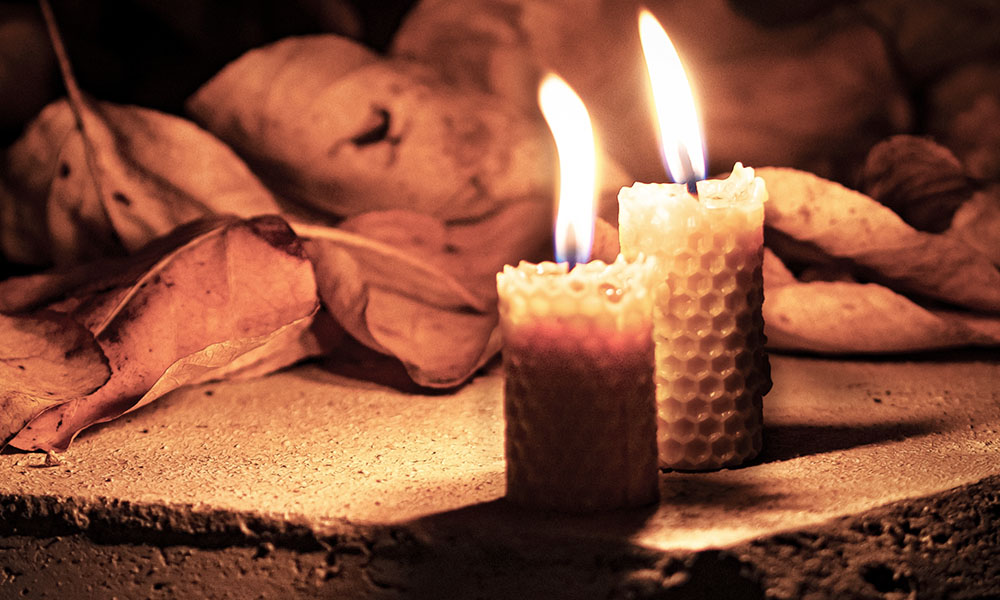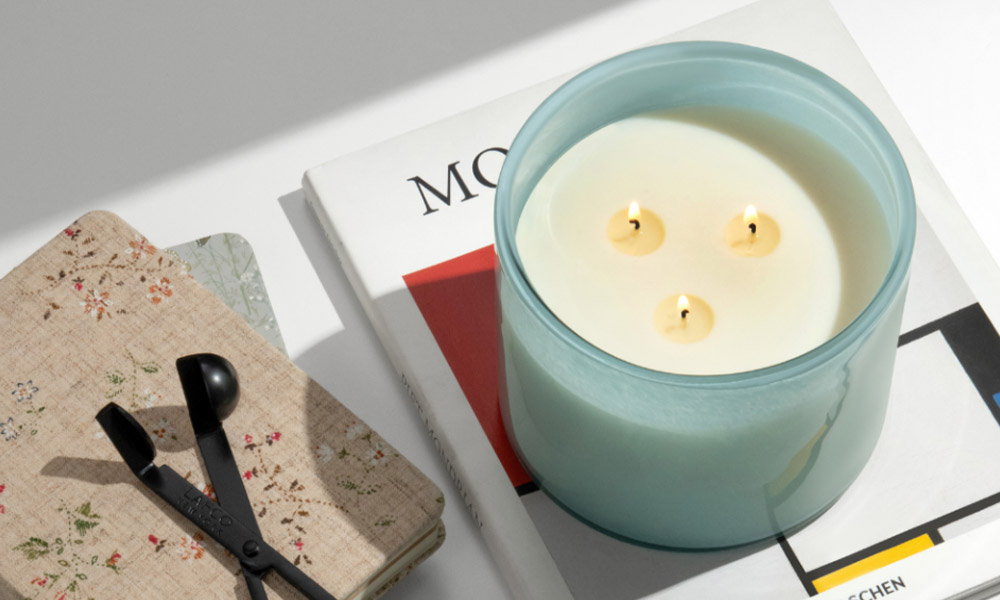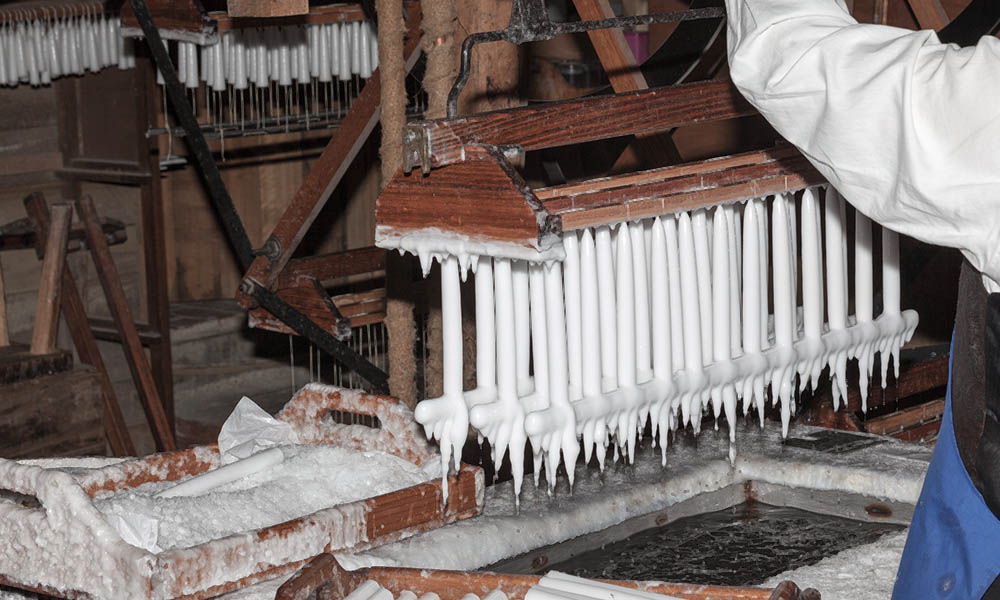The long and storied history of candles dates back to ancient civilizations when candles were the primary light source for homes. They also played a quintessential role in cultural ceremonies and spiritual worship. While still relevant in these applications, the modern-day candle has added another role to its resume – one of decoration.
The art of candle making has changed dramatically over the centuries, but the simple candle’s purpose has remained the same: to bring light into darkness.
The modern candle brings more than physical light, however. With the addition of fragrance and design, today’s candles have the power to brighten the spirit as well as the home. In this brief history of candle making, we’ll explore the candle’s evolution from a utilitarian necessity into a source of comfort for people across the world.
The Origins of Candle Making
As is true for many inventions we continue to benefit from today, we owe the creation of the candle to the ancient Romans. The first candles were created by repeatedly dipping rolled papyrus in tallow or beeswax and burned in homes, during travel, and in religious ceremonies.
Though the Romans are often credited with the creation of the candle, evidence suggests the ancient Egyptians, Japanese, and Chinese also used wicked candles.
There is evidence of wick candles being made in Egypt as early as 3000 B.C. Around the same time, the Chinese were using rice paper for wicks and wax from insects and seeds to make candles, while the ancient Japanese used tree nuts for wax and the Indians boiled the fruit of the cinnamon tree for wax.
Candles have also played an important role in religious ceremonies throughout the world, such as the Jewish Festival of Lights (Hanukkah), which began in 165 B.C. and has included the use of candles ever since.
Changes Throughout History

Though ancient Eastern cultures relied primarily on plant-based waxes, Western cultures largely made candles from rendered animal fat called tallow. Beeswax candles were introduced in Europe during the Middle Ages, providing a cleaner, less foul-smelling burn. Because beeswax candles were expensive, however, their use was largely limited to religious ceremonies.
By the 13th century, candle making had become a guild craft in France and England. Candlemakers known as chandlers travelled from house to house, making candles from kitchen fats. In colonial America, women led innovations in candle making with the discovery that boiling bayberries produced a clean-burning, sweet-smelling wax.
The whaling industry of the 18th century heralded in the first significant change in candle making since the Middle Ages. Spermaceti, a wax obtained by crystallizing sperm whale oil, became readily available and offered a brighter, less repugnant alternative to tallow. It was during the 19th century, however, that most of the developments that led to modern candle making processes occurred.
The Path to Modern Candle Making
During the 1820s, French chemist Michel Eugene Chevreul developed a process for extracting stearic wax from animal fatty acids. Stearin wax was hard and durable but, unlike tallow, it produced a clean burn. In 1834, an inventor named Joseph Morgan further revolutionized the industry when he created a device that mechanized molded candle production. With these revolutionary advancements in technology along with the introduction of paraffin wax in the 1850s (making them more affordable), candles quickly became a readily available commodity everyone could enjoy.
Though the discovery of electricity put a damper on the candle industry, the popularity of candles was renewed during the first half of the 20th century as oil and meatpacking industries grew in the U.S., increasing the availability of paraffin and stearic acid.
During the 1980s, consumer interest in candles as decorative items began to escalate. No longer limited to practical use, candles quickly became available in a broad array of shapes, colors, and sizes. Manufacturers began adding fragrance which led to a surge in popularity – the first instance in over a century in which the popularity of candles had grown significantly.
As concerns about the environment have grown, chemists have begun to develop cleaner, more sustainable candle-making ingredients like soybean wax. Soy wax is made from soybeans, a renewable resource that is biodegradable and free from chemical pesticides and herbicides. Soy wax burns cleaner than traditional waxes, producing very little soot and releasing fewer toxins into the air.
Additionally, soy wax has a lower melting point, which means that it burns longer than traditional waxes and can also hold more fragrance oil, resulting in a stronger scent. This makes soy wax a more sustainable and eco-friendly alternative to traditional candle-making ingredients.
Established in 1992, the Luxury Articles and Fragrance Company (LAFCO), follows the European tradition of botanical based fragrances and uses a soy wax blend to create sustainable home fragrance solutions.
How Are LAFCO Candles Made?

Pure essential oil-based fragrance lies at the heart of the LAFCO home fragrance product lineup which includes an extensive selection of blown glass reed diffusers, body care products, and scented candles.
The LAFCO House & Home Collection is a luxury line of scented candles that was first introduced in 2007. The collection was curated with the intention of using fragrances to transform any space into an immersive sensory experience. The candles are presented in eye-catching, handcrafted blown-glass vessels, and are meticulously crafted using a premium soy wax blend and 100% cotton wicks. This combination guarantees a clean and even burn, leaving the room filled with your desired fragrance, free of any soot or pollutants.
Shop LAFCO’s extensive candle selection and choose from dozens of luxurious fragrances in seven fragrance families. Candles range in size from the 1.9-ounce votive and travel-friendly 3-ounce candle to the impressive 86-ounce three-wick candle.



I loved learning about the ancient civilizations that pioneered candle making! The part about the Egyptians using beeswax to create candles for their gods was fascinating. It’s amazing to see how much wax varieties have evolved since then. LAFCO New York’s current candle line is a testament to the art form’s enduring appeal.
“The history of candle making spans thousands of years, from ancient civilizations like Egypt and Rome, where candles were used for light and ceremonies, to today’s decorative and scented options. Over time, techniques evolved from animal fat tallow to beeswax and paraffin, making candles both a practical tool and a popular home décor item.”
What a fascinating history of candle making! It’s amazing to see how this simple craft has evolved over centuries, from its early uses in ancient civilizations to its modern-day role in both functionality and decor. The development of materials and techniques throughout history shows just how far we’ve come. Thanks for sharing this insightful journey through time—it really makes you appreciate the art of candle making even more!
Undoubtedly, the fragrances come from these candles are mind-blowing. I am crazy about the light frgrances in home especially night time. It adds more value to romantic dinner. I love these candles!
Wheel Choice adds an element of surprise to everyday decisions. Customize the wheel with your own options, spin, and let chance make the choice. Whether you’re deciding on activities, selecting teams, or even choosing a winner, this tool makes decision-making interactive and exciting. It’s perfect for group events, casual games, or resolving disputes. The Wheel Choice tool can be used in any setting where a little randomness is needed to make things more interesting. With just a spin, you can enjoy decision-making like never before!
your wheel and your decision
CapCut offers a user-friendly platform for video editing, with diverse templates that allow creators to customize their content with ease. From stylish transitions to music synchronization, these templates help users produce professional-looking videos. They save time and provide creative options, making it easier to share engaging videos across various platforms.
https://icalcapcuttemplate.com/
CapCut templates streamline the video creation process, offering various preset styles for different types of content. Whether you’re creating short clips, tutorials, or vlogs, these templates provide efficient ways to add engaging effects, transitions, and music to videos. By using CapCut’s templates, even beginners can produce polished, visually appealing videos in a short time, making it ideal for those looking to save effort while enhancing their video quality.
https://icalcapcuttemplate.com/
The Text Repeater category offers simple and versatile solutions for duplicating text or phrases in just a few clicks.https://emojikitchen.cc/category/text-repeater/
Enter the Yes or No Wheel—a virtual decision generator that cuts through the noise and delivers a clear “yes” or “no.”If you ever need a fun way to make quick decisions for your next assignment or project, try using a random selection wheel,here https://yesornowheel.me/zh/
This was such an informative read! It’s fascinating to learn how candle making has evolved from ancient times to the modern era. The rich history behind something so simple yet essential is truly remarkable. Thanks for sharing!
houston candle making class are so intriguing. Do they offer weekend sessions for busy schedules?
Here’s the English version with the same playful tone:
Calling all indecisive people! Found a fun spinner website! 🎯
(。◕‿◕。) Just discovered a super useful spinner website that totally cured my indecisiveness~
🤔 Don’t know what to eat?
😋 Don’t know what to play?
🎮 Don’t know what to watch?
Let the wheel decide for you! Check it out: https://yesorno-wheel.com/
It’s become my daily go-to tool now, sharing it with all my fellow indecisive friends (´・ω・`)
Super convenient to use, just open and spin! Hope it helps you too~
╰(*°▽°*)╯
If you’re looking to convert RGBA color values to hexadecimal (HEX) codes, https://rgbatohex.com/ is a handy online tool. It offers real-time previews, professional color schemes, and seamless copying, making color conversion straightforward and efficient.
La historia de la fabricación de velas es realmente fascinante. Es increíble ver cómo han evolucionado, pasando de ser una fuente esencial de luz a convertirse en elementos decorativos y aromáticos en los hogares modernos. La artesanía detrás de la fabricación tradicional de velas es un arte que merece ser apreciado. Para quienes necesitan gestionar su tiempo de manera eficiente mientras trabajan en manualidades o tareas diarias, https://calculadoradehoras.net/ es una excelente herramienta para calcular horas y minutos fácilmente.
https://sprunkisquidgame.com/ is a creative and fun online music game website. It cleverly blends the quirky charm of Sprunki with the intense atmosphere of Squid Game, delivering a unique rhythm-based gaming experience. Players can choose different characters to mix beats infused with suspense and survival themes, combining creativity with strategy. No downloads are needed—just jump in and play directly in your browser. Perfect for anyone who enjoys music and adventure, this game will test your rhythm skills. Give it a try and see how you fare!
Yasuke Simulator is an exciting and wildly imaginative game that transports you to 1579 feudal Japan. Play as Yasuke, an African warrior turned samurai, serving under Oda Nobunaga in his quest to unify Japan. Master the katana and tap into the mystical “Power of Ancestors,” while wielding unexpected weapons like assault rifles and anti-materiel rifles—or even racing through history in a convertible sports car! Blending the real-life story of Yasuke, a historical figure who arrived with Jesuit missionaries, with outrageous twists, this game pushes the limits of history and absurdity for a truly unique adventure.https://yasukesimulator.com/
Yasuke Simulator is an exciting and wildly imaginative game. https://yasukesimulator.win/
You can check the results of 9th class result 2025, 10th class result 2025, 11th class result 2025, and 12th class result 2025. Matric result 2025, Intermediate Part 1 result 2025, Intermediate Part 2 result 2025, Secondary School Certificate (SSC) result 2025, and Higher Secondary School Certificate (HSSC) result 2025.
Picasso App is the most popular streaming application. Click the download button to watch movies, series, sports, podcasts, and more.
CGPA is basically the abbreviation of Cumulative Grade Point Average. It is the sum of a student’s academic performance over a specific period of time. It is calculated by taking the average of all the Grade Point Averages (GPAs) that a student secures in different subjects. In simple terms, it is like combining all your report cards into one big score for clarity.
nice
La historia de la fabricación de velas es fascinante, desde sus orígenes en la antigüedad hasta su evolución en la actualidad. Es increíble cómo han pasado de ser una necesidad básica a un elemento decorativo y aromático.
The history of candle making is truly fascinating, from its early beginnings to its evolution into an art form. It’s amazing how something once essential for survival has transformed into a decorative and aromatic experience. The blend of tradition and innovation in candle making continues to make it a timeless craft.
The article provides a comprehensive overview of the history and development of candles, from ancient times to the modern era. It not only highlights the traditional role of candles in lighting and religious ceremonies but also discusses innovations in materials and production processes to meet today’s decorative and fragrance demands. Notably, the final section introduces the LAFCO brand and its premium candle products, showcasing the trend of using eco-friendly soy wax. This is a well-rounded article that combines historical insights with practical applications, helping readers gain a deeper understanding of the evolution of the candle industry over time.
Thanks for sharing this such a nice and informative blog post!!
This was a truly insightful read! It’s amazing to see how candle making has transformed from ancient practices to modern techniques. The deep history behind something so simple yet vital is absolutely fascinating. Thanks for sharing!
I recently read about an amazing houston candle making class that blends hands-on experience with aromatic fun. The blog does a great job of explaining the setup and the value behind creating your own candles. It’s an enjoyable way to learn a skill and walk away with custom-made keepsakes.
Emoji Kitchen is a fun feature by Google that lets you mix and match different emojis to create unique combinations. 🧑🍳✨
Whether it’s a laughing ghost 👻😂 or a heart-eyed cactus 🌵😍, Emoji Kitchen turns regular emojis into playful, creative stickers.
Available in Gboard (Google Keyboard), it adds personality to your messages and helps you express emotions in fresh, imaginative ways!
It’s like a digital emoji lab where your creativity sets the recipe. 💡🎨
https://theemojikitchen.in/
The PUBG Name Generator is a free tool that helps PUBG players create unique, stylish, and eye-catching usernames. Whether you’re aiming for a bold gaming identity or the ideal squad name, this generator delivers cool name ideas with fancy fonts, symbols, and creative twists.
https://thepubgnamegenerator.com/
Thanks for sharing this such a nice and informative blog post!!
Découvrez la véritable fortune des célébrités ! “Celebrities Pure Fortune” vous dévoile les patrimoines nets les plus incroyables, les sources de revenus, les investissements secrets et les luxes inimaginables des stars du cinéma, de la musique, du sport et des affaires. Suivez les mises à jour régulières et plongez dans l’univers fascinant de la richesse des célébrités du monde entier.
Thanks for the info!
Thank you for sharing such a helpful and informative blog post!
Great amazing blog i like it.